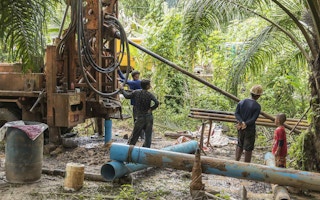Thai authorities are rushing to drill thousands of wells across the country to ensure enough water for drinking and washing, as farmers grapple with a drought and a months-long water shortage.
Authorities examined the water supply and demand nationwide - taking into account needs for agriculture, industrial use and human consumption - and decided to drill 4,300 more wells, said Suphot Tovichakchaikul, secretary of the National Water Board, comprised of water officials and chaired by the prime minister.
“The most effective way to make sure that people have water to use this dry season is to drill underground wells,” Suphot, who is also chief of the Department of Water Resources, said in an interview in his office on Tuesday.
The Thai government told farmers last year to limit their water use and grow alternative crops. The cabinet also approved a multi-million dollar budget in October to help farmers cope with the drought.
“We estimate that the end of this year’s dry season is May 30. The water we have now has to last for the next four months,” Suphot said, pointing to posters detailing rainfall, farmland and reservoirs across the country.
“We are focusing first on water for consumption and daily use - for drinking, bathing and washing. We have asked farmers for their cooperation to not yet use water for irrigation.”
The government will divert a 3.5 billion baht ($96 million) budget from the Department of Groundwater Resources - originally set aside to dig 6,000 wells at temples, schools and farms - for the urgent construction of the 4,300 wells.
Since October, 1,250 wells have been drilled. They are usually dug to a depth of 80 to 100 metres, some wells in Isaan, the agricultural heartland in northeast Thailand, are dug about 300 metres deep.
Suphot said the government’s long-term strategy includes filling the country’s existing dams to capacity by tapping into rivers including the Yuam and Salween along its border with Myanmar.
“These are international rivers, so apart from an environmental impact assessment and feasibility studies, the Ministry of Foreign Affairs will have to tend this issue with respect to relations with neighbouring countries,” he said.
Worsening drought could prove another headache for Thailand’s military government, which took power after a 2014 coup and is grappling with a lacklustre economy.










